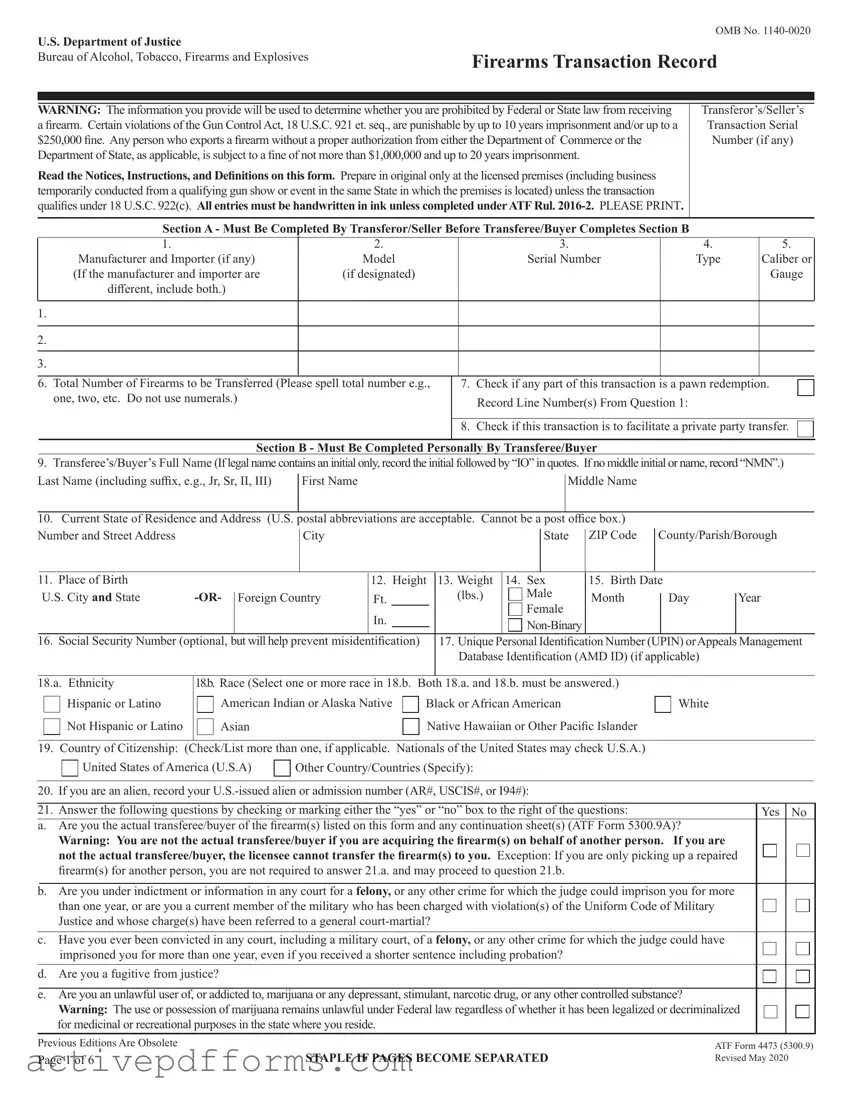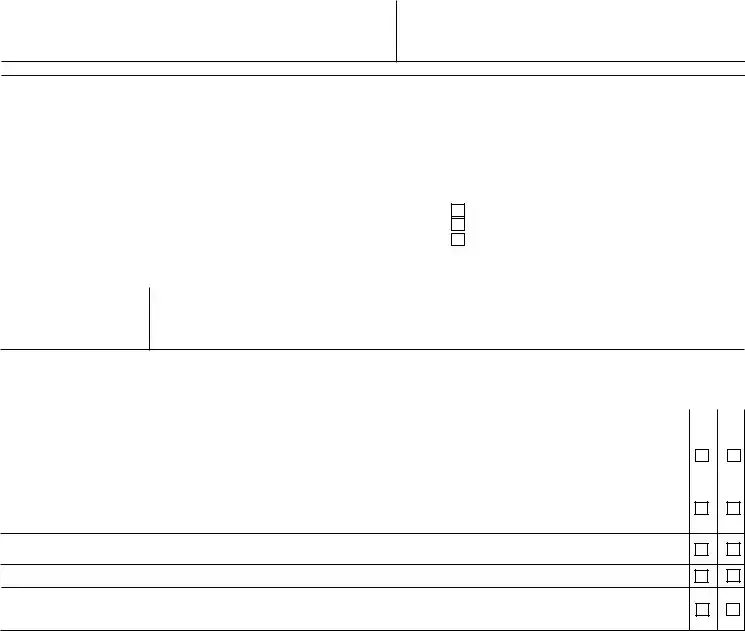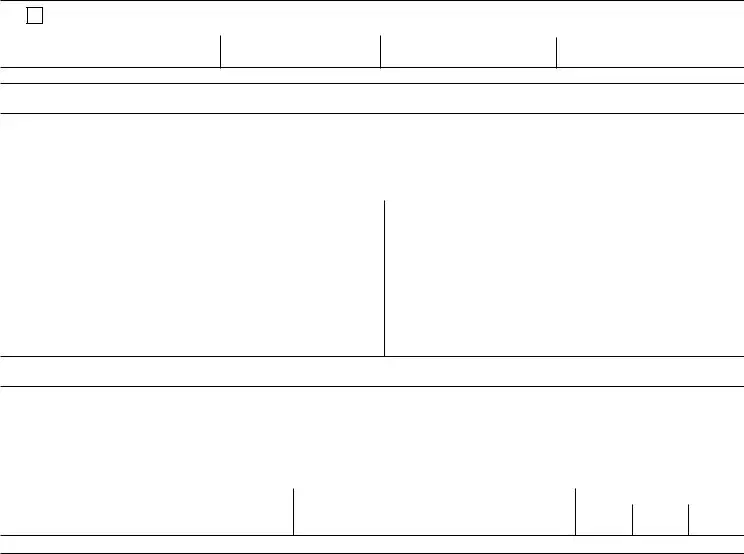Types of firearms include, but are not limited to: pistol, revolver, rifle, shotgun, receiver, frame, and firearms that are neither handguns nor long guns (rifles or shotguns), such as firearms having a pistol grip that expel a shotgun shell (pistol grip firearm) or NFA firearms (machinegun, silencer, short-barreled shotgun, short- barreled rifle, destructive device, or “any other weapon”).
Additional firearms purchases by the same transferee/buyer may not be added to the form after the transferor/seller has signed and dated it. A transferee/buyer who wishes to acquire additional firearms after the transferor/seller has signed and dated the form must complete a new ATF Form 4473 and undergo a new NICS check.
Question 8. Private Party Transfer: Check this box if the licensee is facilitating the sale or transfer of a firearm between private unlicensed individuals in accordance with ATF Procedure 2017-1. This will assist the licensee by documenting which transaction records correspond with private party transfers, and why there may be no corresponding A&D entries when the transfer did not proceed because it was denied, delayed, or cancelled.
Section B
The transferee/buyer must personally complete Section B of this form and certify (sign and date) that the answers are true, correct, and complete. However, if the transferee/buyer is unable to read and/or write, the answers (other than the signature) may be completed by another person, excluding the transferor/seller. Two persons (other than the transferor/seller) must then sign as witnesses to the transferee’s/ buyer’s answers and signature/certification in question 22.
When the transferee/buyer of a firearm is a corporation, company, association, partnership, or other such business entity, an officer authorized to act on behalf
of the business must complete Section B of the form with his/her personal information, sign Section B, and attach a written statement, executed under penalties of perjury, stating:
(A)the firearm is being acquired for the use of and will be the property of that business entity; and (B) the name and address of that business entity.
Question 9. Transferee’s/Buyers Full Name: If the transferee’s/buyer’s name is illegible, the transferor/seller must print the transferee’s/buyer’s name above the name written by the transferee/buyer.
Question 10. Current Residence Address: A rural route (RR) may be accepted provided the transferee/buyer lives in a State or locality where it is considered a legal residence address.
If the transferee/buyer is a member of the Armed Forces on active duty, his/her State of residence is the State in which his/her permanent duty station is located. If the service member is acquiring a firearm in a State where his/her permanent duty station is located, but resides in a different State, the transferee/buyer must list both his/her permanent duty station address and residence address. If the transferee/buyer has two States of residence, the transferee/buyer should list his/her current residence address (e.g., if the transferee/buyer is purchasing a firearm while staying at his/her weekend home in State X, list the address in State X).
Question 14. Sex: Individuals with neither male nor female on their identification document(s) should check Non-Binary.
Question 17. Unique Personal Identification Number (UPIN) or Appeals Management Database Identification (AMD ID): For transferees/buyers approved to have information maintained about them in the FBI NICS Voluntary Appeal File, NICS will provide them with a UPIN, which the transferee/buyer should record in question 17. The AMD ID is a number that will be provided to an appellant on certain types of overturned appeals and should also be recorded in question 17. The transferor/seller should provide the UPIN/AMD ID when conducting background checks through the NICS or the State POC.
Questions 18.a. and 18.b. Ethnicity and Race: Federal regulations (27 CFR 478.124(c)(1)) require licensees to obtain the race of the transferee/buyer. This information helps the FBI and/or State POC make or rule out potential matches during the background check process and can assist with criminal investigations.
Ethnicity refers to a person’s heritage. Persons of Cuban, Mexican, Puerto Rican, South or Central American, or other Spanish culture or origin, regardless of race, are considered Hispanic or Latino.
Race - one or more of the following responses must be selected: (1) American Indian or Alaska Native - A person having origins in any of the original peoples of North and South America (including Central America), and who maintains a tribal
affiliation or community attachment; (2) Asian - A person having origins in any of the original peoples of the Far East, Southeast Asia, or the Indian subcontinent including, for example, Cambodia, China, India, Japan, Korea, Malaysia, Pakistan, the Philippine Islands, Thailand, and Vietnam; (3) Black or African American - A person having origins in any of the Black racial groups of Africa; (4) Native Hawaiian or Other Pacific Islander - A person having origins in any of the original peoples of Hawaii, Guam, Samoa, or other Pacific Islands; and/or (5) White - A person having origins in any of the original peoples of Europe, the Middle East, or North Africa. Select the closest representation for any other race or ethnicity that does not fall within those indicated.
Question 20. U.S.-issued Alien Number or Admission Number: U.S.-issued alien and admission numbers may be found on the following U.S. Department of Homeland Security documents: Legal Resident Card or Employment Authorization Card (AR# or USCIS#); Arrival/Departure Record, Form I94, or Form 797A (I94#). Additional information can be obtained from www.cbp.gov. If you are a U.S. citizen or U.S. national, the response to this question should be left blank.
Question 21.a. Actual Transferee/Buyer: For purposes of this form, a person is the actual transferee/buyer if he/she is purchasing the firearm for him/herself or otherwise acquiring the firearm for him/herself. (e.g., redeeming the firearm from pawn, retrieving it from consignment, firearm raffle winner). A person is also the actual transferee/buyer if he/she is legitimately purchasing the firearm as a bona fide gift for a third party. A gift is not bona fide if another person offered or gave the person completing this form money, service(s), or item(s) of value to acquire the firearm for him/her, or if the other person is prohibited by law from receiving or possessing the firearm.
EXAMPLES: Mr. Smith asks Mr. Jones to purchase a firearm for Mr. Smith (who may or may not be prohibited). Mr. Smith gives Mr. Jones the money for the firearm. Mr. Jones is NOT THE ACTUAL TRANSFEREE/BUYER of the firearm and must answer “no” to question 21.a. The licensee may not transfer the firearm to Mr. Jones. However, if Mr. Brown buys the firearm with his own money to give to Mr. Black as a gift (with no service or tangible thing of value provided by Mr. Black), Mr. Brown is the actual transferee/buyer of the firearm and should answer “yes” to question 21.a. However, the transferor/seller may not transfer a firearm to any person he/she knows or has reasonable cause to believe is prohibited under 18 U.S.C. 922(g), (h), (n), or (x).
Questions 21.b. - 21.l. Prohibited Persons: Generally, 18 U.S.C. 922(g) prohibits the shipment, transportation, receipt, or possession in or affecting interstate commerce of a firearm by one who: has been convicted of a felony in any Federal, including a general court-martial, State or local court, or any other crime, punishable by imprisonment for a term exceeding one year; is a fugitive from justice; is an unlawful user of, or addicted to, marijuana or any depressant, stimulant, or narcotic drug, or any other controlled substance; has been adjudicated as a mental defective or has been committed to a mental institution; has been discharged from the Armed Forces under dishonorable conditions; is subject to certain restraining orders; convicted of a misdemeanor crime of domestic violence under Federal, including a general court-martial, State or Tribal law; has renounced his/her U.S. citizenship; is an alien illegally in the United States or an alien admitted to the United States under a nonimmigrant visa. Furthermore, section 922(n) prohibits the shipment, transportation, or receipt in or affecting interstate commerce of a firearm by one who is under indictment or information for a felony in any Federal, including a general court-martial, State or local court, or any other crime, punishable by imprisonment for a term exceeding one year. An information is a formal accusation of a crime verified by a prosecutor.
A member of the Armed Forces must answer “yes” to 21.b. if charged with an offense that is referred to a general court-martial. A current or former member of the Armed Forces must answer “yes” to 21.c. if convicted under a general court-martial.
Discharged “under dishonorable conditions” means separation from the Armed Forces resulting from a dishonorable discharge or dismissal adjudged by a general court-martial. That term does not include any other discharge or separation.
EXCEPTION: A person is not prohibited from receiving or possessing a firearm
if that person: (1) has been convicted of any Federal or State offense pertaining to antitrust violations, unfair trade practices, restraints of trade, or other similar offenses relating to the regulation of business practices; (2) has been convicted of a State mis- demeanor punishable by imprisonment of two years or less; or (3) following convic- tion of a felony or other crime for which the judge could have imprisoned the person for more than one year, or a misdemeanor crime of domestic violence, has received a pardon, an expungement or set aside of the conviction, or has lost and regained civil



